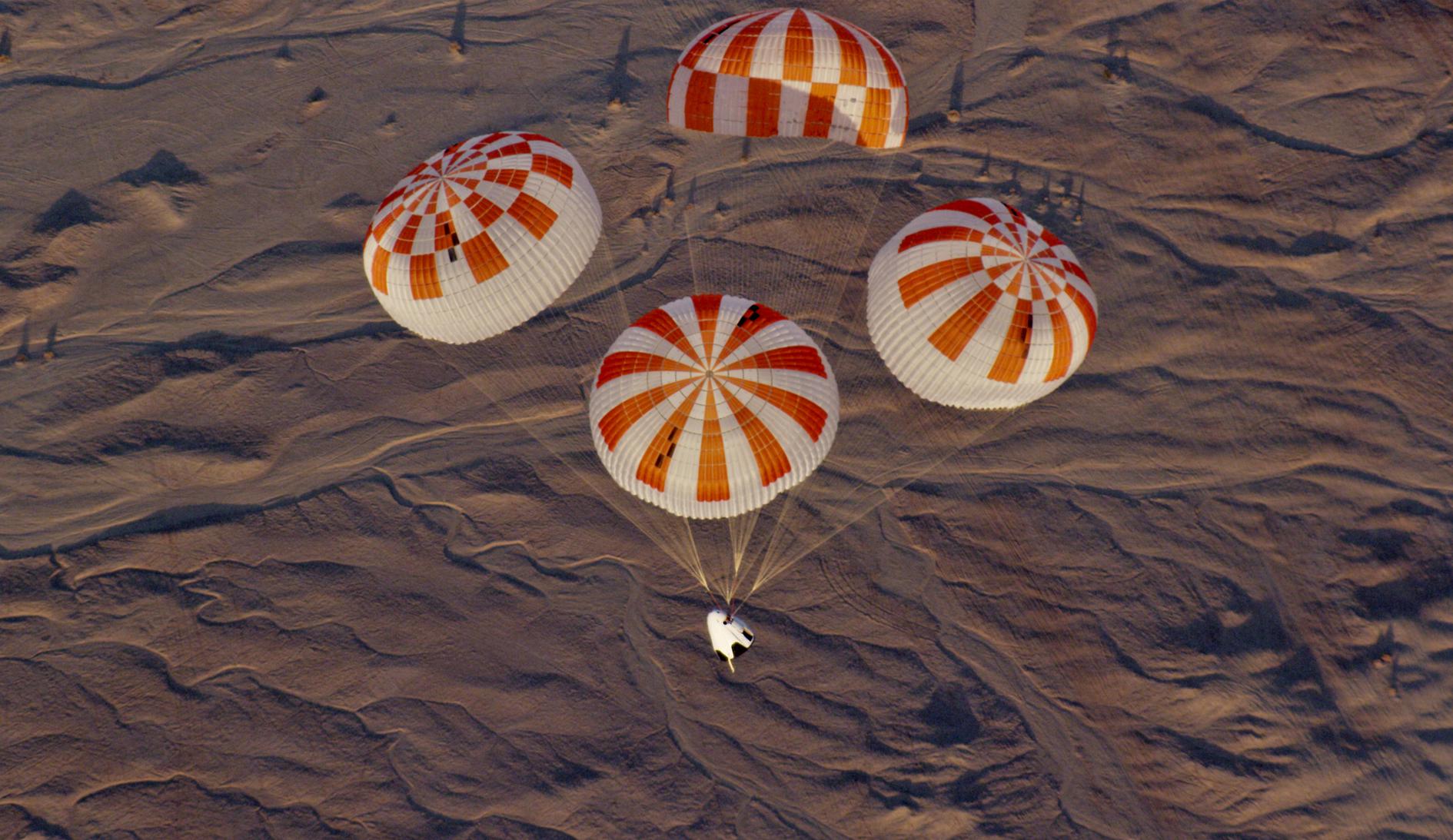

News
SpaceX dropped a Crew Dragon mockup to save a helicopter and its passengers
SpaceX says it encountered an issue that forced it to drop a Crew Dragon spacecraft mockup during parachute testing — not a failure of the vehicle or its parachutes, to be clear, but still a problem nonetheless.
This is now the second significant hurdle SpaceX’s Crew Dragon astronaut spacecraft has faced in the last few days, following the revelation that NASA will not permit the company to launch astronauts until it completes an investigation into an in-flight rocket engine failure during its March 18th Starlink launch. There is likely no technical corollary for the new Falcon 9 rockets that will launch NASA astronauts, but existing Commercial Crew Program (CCP) contract rules still require SpaceX’s internal investigation be completed before it can proceed. With lives on the line, caution – within reason – is unequivocally preferable to the alternative.
Thankfully, SpaceX’s parachute test article anomaly should have a much smaller impact on Crew Dragon’s astronaut launch debut schedule, but it’s unlikely to have zero impact.
“During a planned parachute drop test [on Tuesday], the test article suspended underneath the helicopter became unstable. Out of an abundance of caution and to keep the helicopter crew safe, the pilot pulled the emergency release. As the helicopter was not yet at target conditions, the test article was not armed, and as such, the parachute system did not initiate the parachute deployment sequence. While the test article was lost, this was not a failure of the parachute system and most importantly no one was injured. NASA and SpaceX are working together to determine the testing plan going forward in advance of Crew Dragon’s second demonstration mission.”
SpaceX — March 24th, 2020
On March 24th, SpaceX says it was preparing for one of the last system-level Crew Dragon parachute tests planned before the spacecraft can be declared ready for human spaceflight. These final tests are reportedly focused on corner cases, referring to unusual but not impossible scenarios the spacecraft might encounter during operational astronaut landing attempts. Those likely include parachute deployment scenarios that are far more stressful than a nominal reentry, descent, and landing would allow.
Regardless, things did not go as planned during Tuesday’s test attempt. SpaceX primarily uses cargo planes, helicopters, and large balloons to carry its Crew Dragon test articles (not actual functional spacecraft) to the altitudes and speeds needed to achieve certain test conditions. On March 24th, SpaceX was using a helicopter – either a civilian Blackhawk or a much larger Skycrane.
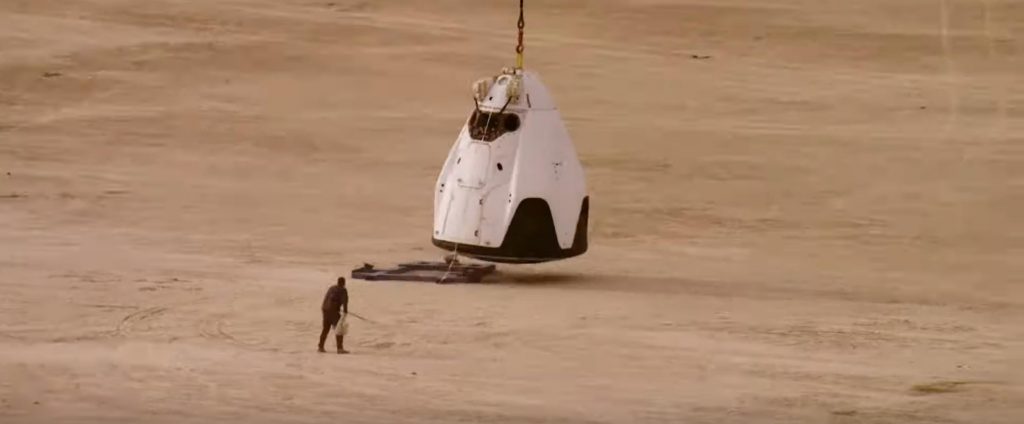
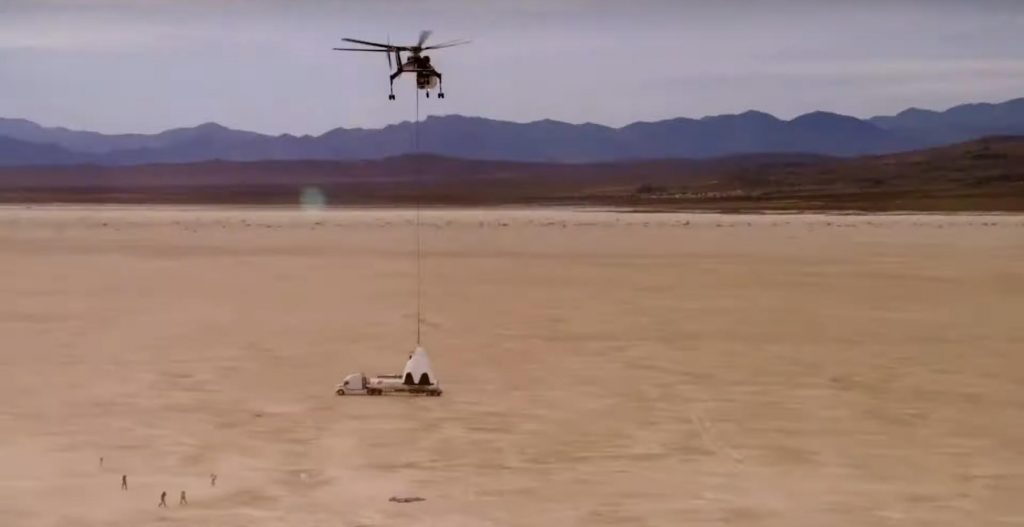
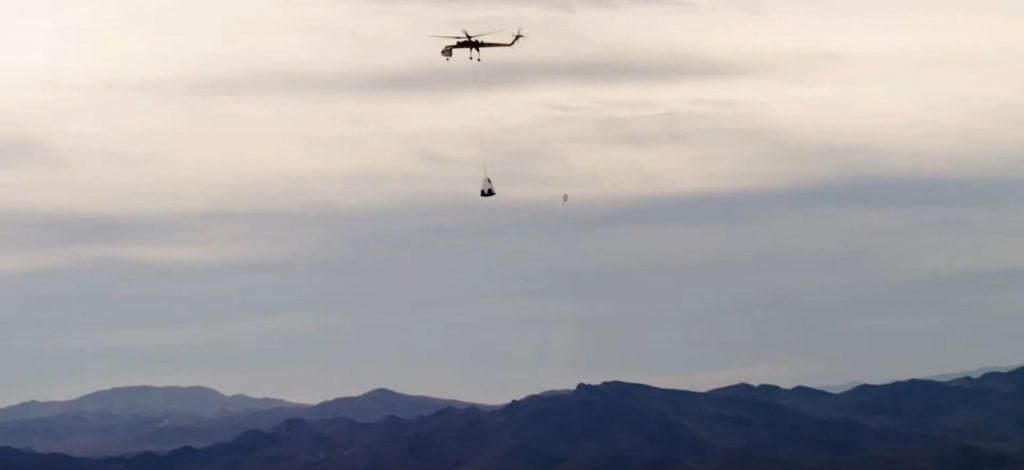
For unknown reasons, the helicopter carrying the Crew Dragon test article on March 24th began to experience “instability”, likely referring to some sort of resonance (wobble, sway, oscillation, etc). Out of an abundance of caution, the pilot – likely highly trained – decided the instability was becoming an unacceptable risk and chose to drop the cargo load (a Crew Dragon mockup). Unsurprisingly, the parachute test article was not ready to drop and plummeted to the Earth without any kind of parachute deployment, likely pancaking on the desert floor shortly thereafter.
Again, it needs to be noted – as SpaceX did above – that the loss of the Crew Dragon parachute test article was entirely unrelated to the performance of the spacecraft or the parachutes it was testing. The mockup destroyed in the incident is essentially just a boilerplate mass simulator shaped like a Crew Dragon capsule to achieve more aerodynamically accurate test results. As such, it’s far simpler and cheaper than an actual Dragon spacecraft and shouldn’t take long at all to replace if SpaceX doesn’t already have a second similar mockup ready to go.
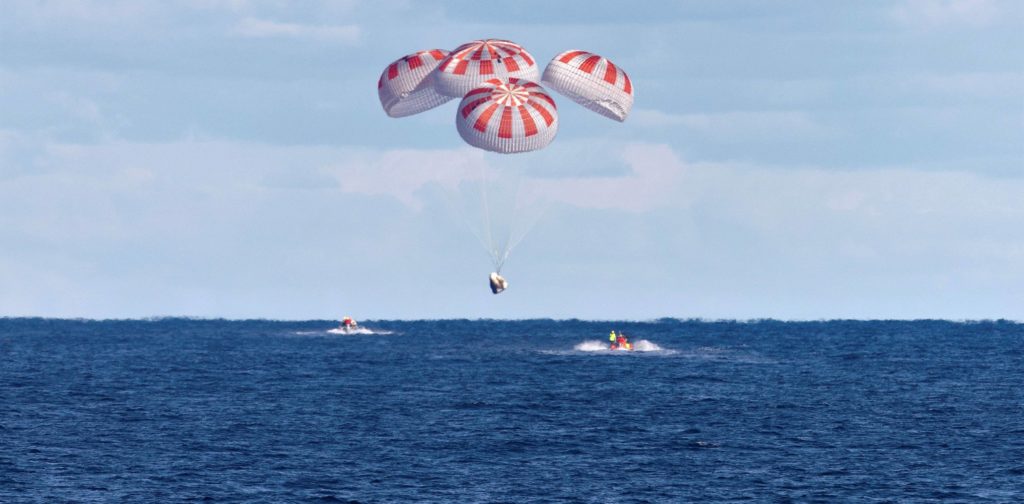
Thankfully, that means that the loss of the test article should have next to no serious impact on Crew Dragon’s inaugural astronaut launch schedule. Planned no earlier than (NET) mid-to-late May according to NASA’s latest official statement, SpaceX and the space agency still have at least a month and a half to work through a final parachute test campaign, complete an investigation into Starlink L6’s Falcon booster engine failure, and finish several trees worth of paperwork and reviews. Delays remain likely but they shouldn’t be more than a few weeks, barring any future surprises.
News
Tesla begins Robotaxi certification push in Arizona: report
Tesla seems serious about expanding its Robotaxi service to several states in the coming months.

Tesla has initiated discussions with Arizona transportation regulators to certify its driverless Robotaxi service in the state, as per a recent report from Bloomberg News. The move follows Tesla’s launch of its Robotaxi pilot program in Austin, Texas, as well as CEO Elon Musk’s recent comments about the service’s expansion in the Bay Area.
The Arizona Department of Transportation confirmed to Bloomberg that Tesla has reached out to begin the certification process for autonomous ride-sharing operations in the state. While details remain limited, the outreach suggests that Tesla is serious about expanding its driverless Robotaxi service to several territories in the coming months.
The Arizona development comes as Tesla prepares to expand its service area in Austin this weekend, as per CEO Elon Musk in a post on X. Musk also stated that Tesla is targeting the San Francisco Bay Area as its next major market, with a potential launch “in a month or two,” pending regulatory approvals.
Tesla first launched its autonomous ride-hailing program on June 22 in Austin with a small fleet of Model Y vehicles, accompanied by a Tesla employee in the passenger seat to monitor safety. While still classified as a test, Musk has said the program will expand to about 1,000 vehicles in the coming months. Tesla will later upgrade its Robotaxi fleet with the Cyercab, a two-seater that is designed without a steering wheel.
Sightings of Cybercab castings around the Giga Texas complex suggests that Tesla may be ramping the initial trial production of the self-driving two-seater. Tesla, for its part, has noted in the past that volume production of the Cybercab is expected to start sometime next year.
In California, Tesla has already applied for a transportation charter-party carrier permit from the state’s Public Utilities Commission. The company is reportedly taking a phased approach to operating in California, with the Robotaxi service starting with pre-arranged rides for employees in vehicles with safety drivers.
News
Tesla sets November 6 date for 2025 Annual Shareholder Meeting
The automaker announced the date on Thursday in a Form 8-K.

Tesla has scheduled its 2025 annual shareholder meeting for November 6, addressing investor concerns that the company was nearing a legal deadline to hold the event.
The automaker announced the date on Thursday in a Form 8-K submitted to the United States Securities and Exchange Commission (SEC). The company also listed a new proposal submission deadline of July 31 for items to be included in the proxy statement.
Tesla’s announcement followed calls from a group of 27 shareholders, including the leaders of large public pension funds, which urged Tesla’s board to formally set the meeting date, as noted in a report from The Wall Street Journal.
The group noted that under Texas law, where Tesla is now incorporated, companies must hold annual meetings within 13 months of the last one if requested by shareholders. Tesla’s previous annual shareholder meeting was held on June 13, 2024, which placed the July 13 deadline in focus.
Tesla originally stated in its 2024 annual report that it would file its proxy statement by the end of April. However, an amended filing on April 30 indicated that the Board of Directors had not yet finalized a meeting date, at least at the time.
The April filing also confirmed that Tesla’s board had formed a special committee to evaluate certain matters related to CEO Elon Musk’s compensation plan. Musk’s CEO performance award remains at the center of a lengthy legal dispute in Delaware, Tesla’s former state of incorporation.
Due to the aftermath of Musk’s legal dispute about his compensation plan in Delaware, he has not been paid for his work at Tesla for several years. Musk, for his part, has noted that he is more concerned about his voting stake in Tesla than his actual salary.
At last year’s annual meeting, TSLA shareholders voted to reapprove Elon Musk’s compensation plan and ratified Tesla’s decision to relocate its legal domicile from Delaware to Texas.
Elon Musk
Grok coming to Tesla vehicles next week “at the latest:” Elon Musk
Grok’s rollout to Tesla vehicles is expected to begin next week at the latest.

Elon Musk announced on Thursday that Grok, the large language model developed by his startup xAI, will soon be available in Tesla vehicles. Grok’s rollout to Tesla vehicles is expected to begin next week at the latest, further deepening the ties between the two Elon Musk-led companies.
Tesla–xAI synergy
Musk confirmed the news on X shortly after livestreaming the release of Grok 4, xAI’s latest large language model. “Grok is coming to Tesla vehicles very soon. Next week at the latest,” Musk wrote in a post on social media platform X.
During the livestream, Musk and several members of the xAI team highlighted several upgrades to Grok 4’s voice capabilities and performance metrics, positioning the LLM as competitive with top-tier models from OpenAI and Google.
The in-vehicle integration of Grok marks a new chapter in Tesla’s AI development. While Tesla has long relied on in-house systems for autonomous driving and energy optimization, Grok’s integration would introduce conversational AI directly into its vehicles’ user experience. This integration could potentially improve customer interaction inside Tesla vehicles.
xAI and Tesla’s collaborative footprint
Grok’s upcoming rollout to Tesla vehicles adds to a growing business relationship between Tesla and xAI. Earlier this year, Tesla disclosed that it generated $198.3 million in revenue from commercial, consulting, and support agreements with xAI, as noted in a report from Bloomberg News. A large portion of that amount, however, came from the sale of Megapack energy storage systems to the artificial intelligence startup.
In July 2023, Musk polled X users about whether Tesla should invest $5 billion in xAI. While no formal investment has been made so far, 68% of poll participants voted yes, and Musk has since stated that the idea would be discussed with Tesla’s board.
-

 Elon Musk1 week ago
Elon Musk1 week agoTesla investors will be shocked by Jim Cramer’s latest assessment
-

 Elon Musk3 days ago
Elon Musk3 days agoElon Musk confirms Grok 4 launch on July 9 with livestream event
-

 Elon Musk16 hours ago
Elon Musk16 hours agoxAI launches Grok 4 with new $300/month SuperGrok Heavy subscription
-

 News7 days ago
News7 days agoTesla Model 3 ranks as the safest new car in Europe for 2025, per Euro NCAP tests
-

 Elon Musk2 weeks ago
Elon Musk2 weeks agoA Tesla just delivered itself to a customer autonomously, Elon Musk confirms
-

 Elon Musk1 week ago
Elon Musk1 week agoxAI’s Memphis data center receives air permit despite community criticism
-

 Elon Musk2 weeks ago
Elon Musk2 weeks agoTesla’s Omead Afshar, known as Elon Musk’s right-hand man, leaves company: reports
-

 News2 weeks ago
News2 weeks agoXiaomi CEO congratulates Tesla on first FSD delivery: “We have to continue learning!”

















